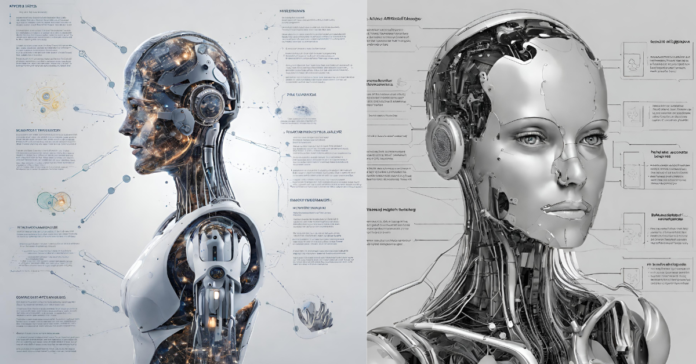Artificial Intelligence (AI), defined as “the science and engineering of making intelligent machines, brilliant computer programs” by the father of AI, John McCarthy, has become an integral part of modern technology. It involves creating systems or software capable of intelligent thinking and behavior mirroring human cognition.
Scope of Artificial Intelligence
Automation and Robotics
One of the primary aims of AI is to develop software programs capable of problem-solving and goal achievement, akin to human capabilities. The scope of AI extends across various domains, including robotics, automation, speech recognition, language detection systems, gaming, and expert systems.
Education and Skills Required

Aspiring professionals in AI need a solid educational background in mathematics, technology, logic, and engineering. Additionally, soft skills such as effective communication are crucial for conveying the utility of AI tools in practical applications.
Applications of AI
AI in Data Analysis
AI and Machine Learning (ML) are significant in data analysis and science. ML algorithms enhance data analysis accuracy and efficiency, particularly in handling large datasets. Platforms like Google Analytics utilize AI and ML to derive website traffic insights faster.
AI in Science and Research
In scientific research, AI’s ability to process vast amounts of data at high speeds is invaluable. It aids researchers in deriving insights and relationships from complex datasets, expediting the pace of discovery.
AI in Smart Homes
The emergence of smart home technologies, powered by AI and machine learning, has revolutionized home automation. Devices like Amazon Echo and Google Home leverage voice processing and recognition to execute various tasks, enhancing convenience and efficiency.
AI in Cybersecurity
Cybersecurity is increasingly reliant on AI solutions to combat evolving threats. AI-based systems automate threat detection and fraud prevention tasks, bolstering organizations’ security measures.
AI in Transportation
AI has long been integrated into transportation systems, from autopilot systems in aircraft to the development of autonomous vehicles. These advancements rely on AI and ML algorithms for optimal performance and safety.
AI in Healthcare

In healthcare, AI aids in drug development, diagnostics, and personalized treatment plans. AI-powered systems analyze patient data to assist clinicians in making informed decisions, ultimately improving patient outcomes.
Areas of Research in AI
Machine Learning
Definition and Fundamentals
Machine Learning, a subset of AI, enables computers to learn from data without explicit programming. It encompasses supervised, unsupervised, and reinforcement learning techniques facilitated by programming languages like Python.
Prerequisites and Algorithms
Proficiency in statistics, calculus, linear algebra, and programming languages is essential for mastering machine learning. Python libraries such as Numpy, Scikit-learn, and TensorFlow are commonly used to implement ML algorithms.
Deep Learning
Understanding Deep Learning
Deep Learning employs multi-layered neural networks to emulate human learning processes. It excels in tasks requiring complex pattern recognition and analysis, driving automation in various domains.
Natural Language Processing (NLP)
NLP Fundamentals
NLP enables machines to understand and generate human language, bridging the gap between human communication and AI systems. Its components include natural language understanding (NLU) and natural language generation (NLG).
Artificial Neural Networks (ANN)
Mimicking Human Brain
ANNs replicate the interconnected structure of the human brain, facilitating complex decision-making and pattern recognition tasks in AI systems.
Robotics

Robotics Overview
Robotics integrates AI with mechanical systems to create autonomous machines capable of performing diverse tasks. It finds applications across industries, military operations, healthcare, and exploration.
Expert Systems
Simulating Human Expertise
Expert Systems utilize AI techniques to emulate human knowledge and decision-making processes. They excel in tasks requiring classification, diagnosis, monitoring, and planning.
Computer Vision
Understanding Visual Data
Computer Vision enables machines to interpret and analyze visual data, encompassing tasks like image processing, object detection, and facial recognition.
Conclusion
Artificial Intelligence encompasses diverse research areas, each contributing to developing intelligent systems and technologies. From machine learning algorithms to robotics and computer vision, AI drives innovation across industries, promising a future of enhanced automation and efficiency.
FAQs
What are the prerequisites for learning machine learning?
Proficiency in statistics, calculus, linear algebra, and programming languages like Python is essential for mastering machine learning.
How does deep learning differ from traditional machine learning?
Deep learning employs multi-layered neural networks to learn complex patterns directly from data, whereas traditional machine learning relies on explicit programming and feature engineering.
What are the components of natural language processing (NLP)?
NLP comprises natural language understanding (NLU) and natural language generation (NLG), enabling machines to comprehend and generate human language.
How do artificial neural networks (ANNs) mimic the human brain?
ANNs replicate the interconnected structure of neurons in the human brain, enabling AI systems to process information and make decisions analogous to human cognition.
What are some applications of robotics beyond industrial automation?
Robotics finds applications in various domains, including healthcare, military operations, exploration, and entertainment, contributing to advancements in autonomous systems and human-machine interaction.


